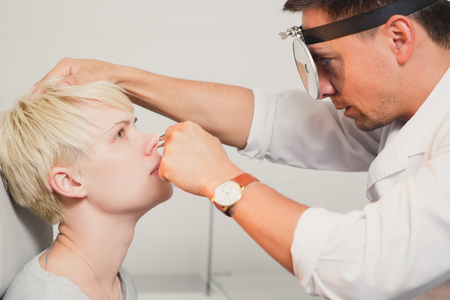
During nose job consultations, facial cosmetic surgeons examine the outside of a nose by areas and zones. Rhinoplasty surgeons also carefully inspect inside the nose. Why? Bent, crooked or missing inside structures affect the outside look of a nose and patient breathing.
Here are the most common nasal features that nose job patients ask to be corrected:
- The hump:
Working under the skin, using delicate filing and shaving tools, the rhinoplasty surgeon shaves down a hump tiny slice by tiny slice until the nose bridge is straighter.
(See some nose job before & after pictures.)
- A Nose too wide:
The surgeon “rearranges” (Read: gently breaks with the fingers) nasal bones to reduce the width. It sounds much worse than it is, causing not nearly as much after surgery discomfort as most think. It takes a very skilled rhinoplasty surgeonabout 90 seconds to make your nasal bones much closer friends and the nose slimmer.
- A crooked nose:
Often a bent, twisted or crooked nasal septum (the paper-thin wall separating the nostrils) causes the outside of the nose to also look crooked. Breathing problems are usually present. The bent septum is surgically shaved down to straighten it, allowing a freer flow of air.
(Look at some revision rhinoplasty before & after pictures.)
- A Nose juts out too far from the face:
A bit more internal surgery is required. A too-high nasal septum is shaved down while a large nasal spine can be removed. If the nasal tip is in a taller-than-normal position the columella (the strip of skin separating the nostrils) can be shortened.
- A bulbous tip:
The cartilage that gives a tip its shape – or lack thereof – is sculptured with an eye on balance, symmetry and a natural look. Plus, it’s all done under the skin which contracts to hug the new framework.
(See some permanent, non-surgical rhinoplasty before & after pictures.)
- Unsightly nostrils:
Creating a nicer tip will also affect the size and shape of nostrils, so surgery here is tricky. For some, fixing a bulbous tip takes care of nostrils, too. Others must have a tiny portion of the nostril wings or floor surgically removed.
- The nose-lip angle:
A nose that sits close to the patient’s top lip and perhaps hangs down can be improved by removing a small portion of the large internal support features like the front part of the septum. That frees the nose to ride up and shortens the nose.
(See more rhinoplasty blog posts.)
- A drooping nose upon smiling:
A short — but strong–muscle (the “nose depressor”) running under the skin from the upper lip to the front of the septum can be severed.
In the very best of hands, the above procedures are done via unseen incisions inside the nose and closed with dissolving stitches.

